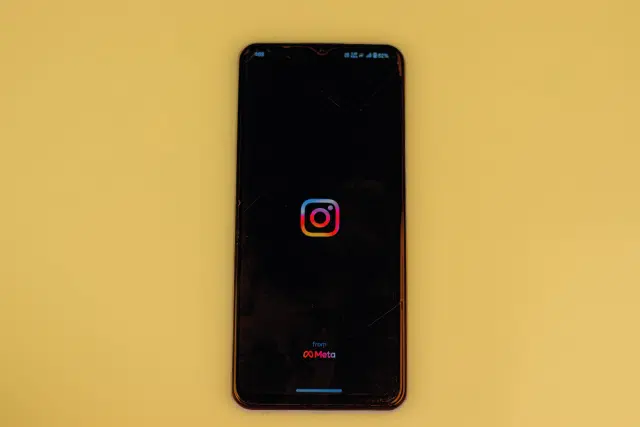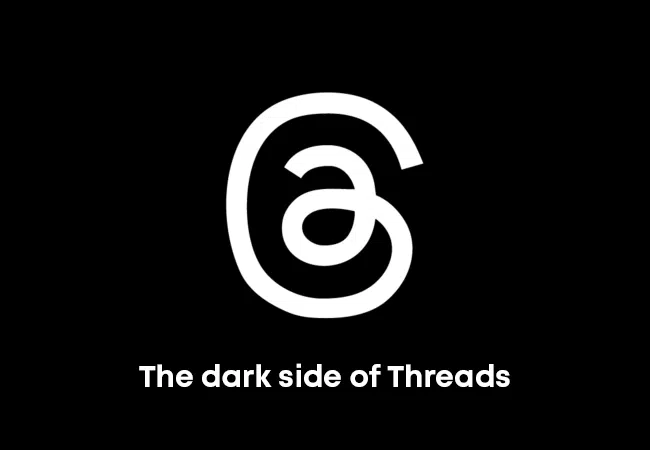Can ‘Wrapped for Instagram’ really see who viewed your posts?
Posted: November 15, 2023
If an app could reveal which Instagram users have viewed other users’ posts would you be intrigued, horrified, or skeptical?
A new third-party app called “Wrapped for Instagram” can supposedly provide intimate details about other people’s interactions with your content—and all it needs is your username and password.
This article explores whether Wrapped can really access the private data it claims to provide based on what we know about Instagram’s data collection practices.
What is ‘Wrapped for Instagram’?
Wrapped for Instagram is (or was) an iOS app published by a company that calls itself “Wrapped Labs LLC”. The app claims to report metrics relating to a user’s Instagram account, including:
- Which accounts viewed the user’s profile.
- How many accounts have blocked the user
- The number of accounts that took screenshots of the user’s Instagram posts
Wrapped is not associated with Instagram or its parent company Meta, which has asked Apple to remove the app from the App Store. Wrapped’s App Store page now appears to have been taken down.
Upon installing Wrapped, users are requested to enter their Instagram login details.
Once installed, Wrapped provides statistics that are presumably based on data gleaned from the user’s account. The user may then opt to share these statistics via their Instagram story.
Can Wrapped really see who has viewed an Instagram profile?
Whether out of curiosity, concern, or vanity, social media users have long sought ways to discover which other users are viewing their content.
Wrapped is the latest service claiming that it can provide this information, offering insights into the private activities of other Instagram users.
Some Instagram users, who have perhaps spent too long perusing photos of a crush or an ex, might be understandably concerned about such information becoming public.
Should Instagram “stalkers” (or easily embarrassed secret admirers) be planning a Wi-Fi-free trip to an isolated log cabin?
How would Wrapped even collect the intimate sorts of data it claims to collect?
The most obvious explanation is that it doesn’t.
Most likely, Wrapped merely fabricates the statistics it provides—possibly based on whatever data that the app can access.
Does Instagram even collect such information?
Let’s consider how feasible it is that Wrapped can do what the developer claims.
In order for Wrapped to collect data about something, the data must obviously exist, and must be accessible to Wrapped.
Because Wrapped requests an Instagram user’s username and password, we can assume that it only has access to the sorts of data that are accessible to the user.
It’s possible that Wrapped has found a way to access Meta’s confidential data, but there’s no evidence for this. So we’ll focus on the sorts of data Instagram collects and makes accessible via users’ accounts.
The Instagram iOS app collects a lot of data about its users. Apple’s App Store reports that Instagram can collect the following types of data about a user:
Data “used to track you”:
- Contact info
- Identifiers
- Other data
Data “linked to you”:
- Health/fitness
- Purchases
- Financial info
- Location
- Contact info
- Contacts
- User content
- Search history
- Browsing history
- Identifiers
- Usage data
- Sensitive info
- Diagnostics
- Other data
That’s a lot of data, and many users might be alarmed to see that Instagram collecting “health and fitness” data, “sensitive info”, and “financial info”.
But bear in mind that users might provide a lot this data voluntarily.
For example, celebrating your latest half marathon time or complaining about your splitting headache might be deemed “health and fitness” data. You’ll need to provide “financial info” to make a purchase on Instagram—or brag about your salary.
Does Instagram know when someone takes a screenshot?
Wrapped claims it can tell users how many people have taken screenshots of their posts. But does Instagram even collect this information?
Instagram allows users to send each other disappearing media via direct message (DM). For example, a picture automatically deletes after one hour. If you send another user a disappearing image, and the other user takes a screenshot of the image, Instagram will notify you.
So Instagram can collect some data about screenshots. But Instagram does not notify users when someone takes a screenshot of a regular DM, a story, or any other sort of content.
Instagram still might be collecting data about screenshots of posts and other content, even if it doesn’t send notifications about it. However, it is very unlikely that Wrapped would be able to access such data.
In order for Wrapped to know who has screenshotted your posts, the app would need to be able to retrieve this information via your login credentials.
Even if Instagram maintains some kind of “screenshot database”, detailing which screenshots each user has taken, it’s highly unlikely that the company would make this information accessible to other users.
Can Wrapped see who has viewed my posts?
Instagram collects a lot of data for analytics and advertising. This might include logs of which content each user has viewed. Such data is used for “profiling”—drawing inferences about each user’s preferences for targeted advertising purposes.
Could Wrapped use any of this data to provide its stats?
Instagram allows users to view their account history. This includes information such as:
- How long the user spends on Instagram
- The photos and reels the user has shared
- The links that a user has recently visited on Instagram
Business accounts can also access aggregated insights about the sorts of people that have viewed their content.
Wrapped could feasibly retrieve “account history” data from a user’s account once the user has provided the app with their login credentials.
But note that Instagram does not disclose the history of which Instagram stories and posts a user has viewed. Furthermore, the app does not appear to log which other users have viewed a person’s content.
As such, it’s highly unlikely that Wrapped could discover which users have viewed your posts.
The trouble with third-party apps
Third-party developers provide some useful services for social media users—from detailed analytics to automated posting tools.
But Meta can’t allow third-party developers too much access to its users’ data. The Cambridge Analytica scandal occurred partly because Facebook enabled a third-party service to read people’s private messages. Facebook got a $5 billion fine over this incident.
Meta and Apple appear to have tackled the “Wrapped for Instagram” problem, and it’s highly likely that the app did not have access to the sorts of intimate data it claimed to provide.
However, many Instagram users surrendered their login details to an unknown and potentially malicious actor.
So, it might be some time before we know the true consequences of the “Wrapped for Instagram” incident.

Download our guide to a first-party data strategy
This resource will give you the tools and knowledge to be able to take your first-party data strategy to the next level so that your business doesn’t get left behind. Here’s what you can find:
- Master the art of gathering rich, valuable insights directly from your customers
- Learn how to navigate the evolving landscape of data privacy regulations whilst building trust
- Get a detailed overview of the latest tools available to optimize your data collection strategy
- Follow our proven framework to integrate data collection practices and drive tangible results

